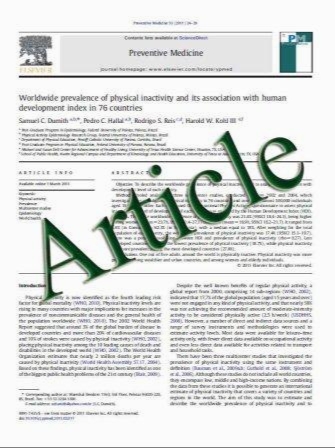Anterior and posterior knee laxity in a young adult Korean population
- نوع فایل : کتاب
- زبان : انگلیسی
- مؤلف : Hong-Chul Lim • Young-Goo Lee • Joon-Ho Wang • Jong-Woong Park • Dong-Hun Suh • Young-Hwan Kim • Ji-Hoon Bae
- چاپ و سال / کشور: 2011
Description
Purpose The purposes of this study were (1) to determine normal anterior and posterior knee laxity in a healthy young adult (20–30 years old) Korean population, (2) to compare knee laxity between the male and female populations, (3) to investigate whether generalized joint laxity affects anterior and posterior knee laxity, (4) to determine side–side differences between right and left knees, and thus, to determine normal values of side–side differences. Methods Normal values of anterior and posterior knee laxity were measured in 100 healthy volunteers (50 men and 50 women) aged between 20 and 30 years. Stress radiography using a Telos device was performed in 20 and 70 of knee flexion for 134N anterior and posterior loads. Anterior and posterior tibial displacements relative to the femur condyle were measured using a computerized system. Results In the 100 subjects (200 knees), anterior knee laxity was greater at 20 of flexion with a mean of 4.9 ± 2.3 mm (P\0.05) and posterior knee laxity was greater at 70 of flexion with a mean of 4.6 ± 2.7 mm (P\0.05). The mean side–side difference was 1.4 ± 0.9 mm (range, -3 to ?3). Women had greater anterior laxity (P\0.05) than men at both 20 and 70 of flexion, but posterior laxity was not different (ns). Generalized joint laxity was greater in women compared to men (P\0.05). Subjects with generalized joint laxity had greater laxity than normal populations in both 20 and 70 of flexion (P\0.05). Side–side differences between right and left knees were not significantly different in women and men or between subjects with normal and generalized joint laxity (ns). Conclusions This study suggests that the Korean population exhibits a wide range of normal anterior and posterior knee laxity, but small side–side differences. Subjects with generalized laxity showed greater knee laxity than those without, but side–side differences were less than 3 mm in all subjects. Thus, clinical guideline that a side– side difference more than 3 mm of anterior knee laxity is abnormal can be applicable for the subjects with generalized laxity. Level of evidence Diagnostic study, Level III.
Knee Surg Sports Traumatol Arthrosc DOI 10.1007/s00167-011-1498-9 Received: 23 September 2010 / Accepted: 21 March 2011


